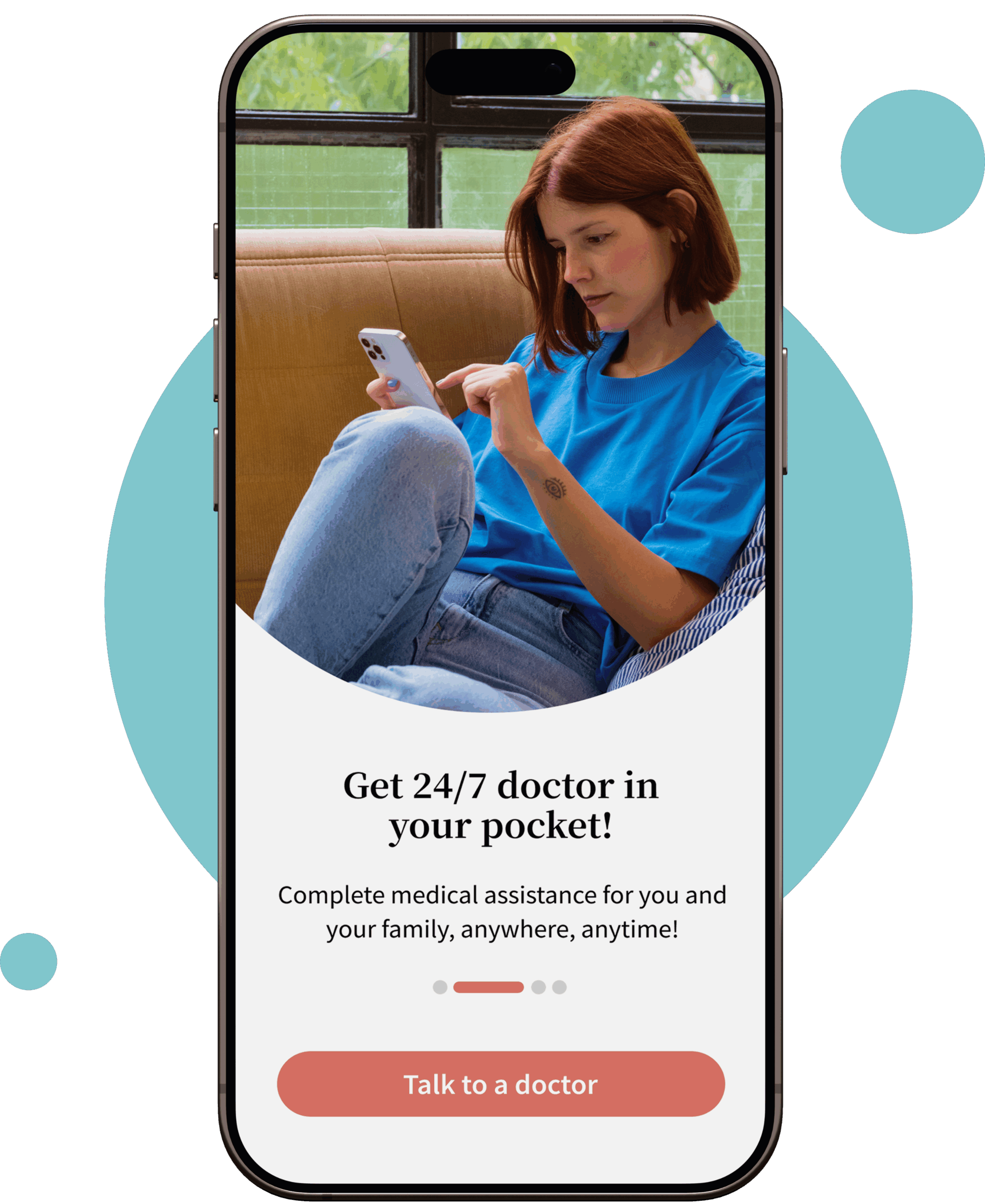Overview
There are several types of acne. Comedonal acne is characterized by many small, flesh-colored bumps that make the skin appear bumpy.
Comedones are the skin-colored, small bumps frequently found on the chin and forehead of those with acne. A single lesion is a comedo.
- Open comedones are blackheads; black because of surface pigment (melanin) rather than dirt.
- Closed comedones are whiteheads, and the follicle is completely blocked.
- Macrocomedones are facial closed comedones bigger than 2–3 mm in diameter.
- Microcomedones are so tiny that they are not visible to the naked eye
- A giant comedo is a cyst type in which there is a clear blackhead-like opening in the skin
- Solar comedones are found on the cheeks and chin of older people and are due to sun damage
In this article, we will be discussing Closed comedones in detail. Please keep reading to know more about it.
Symptoms of Closed Comedones
Comedonal acne does not look like typical acne. Many people with comedonal acne do not consider themselves to have acne.
The reason is that comedones are not red or inflamed like a pimple. They do not tend to swell to excessive proportions or have pus. However, they develop as more minor, non-inflamed bumps called papules that can either be open or closed.
Comedones are most common on the chin, forehead, and jawline. They can also develop on the neck, face, back, shoulders, or chest.
Symptoms can range from mild (with a few odd blemishes) to severe (covering a large part of the skin). Comedones can foster on their own or alongside acne vulgaris.
Comedones can sometimes become acne pimples if someone tries to pop them, allowing bacteria easy access to broken tissue.
Diagnosis of Closed Comedones?
If an inflamed, angry-red pimple is the skincare, like a scream, a closed comedones is a threatening whisper. Seemingly unpoppable and headless, closed comedones are white or skin-colored bumps that gradually build beneath the skin’s surface until they are large enough to be visible in profile.
Evaluation
The identification of lesions diagnoses whiteheads or closed comedones. They appear most often on the chin, forehead, and cheeks. There are no specific tests to confirm it. A doctor or dermatologist will examine your skin under a magnifying glass to verify their presence.
How to Get Rid of Closed Comedones?
Minor modifications in your daily routine and lifestyle can help you eliminate whiteheads and prevent them in the future. Here’s how you can tackle closed comedones through medications, home remedies, and lifestyle changes:
Medications
Closed comedones can be treated using certain medications, from lighter over-the-counter options to higher-strength prescription medicines as follows:
- Topical treatments
Topical treatments are applied to the face to control excess sebum and unclog existing comedones. Common options include:
- Azelaic acid
- Benzoyl peroxide
- Glycolic acid
- Salicylic acid
- Retinoids
- Sulfur
When using topicals, especially acids and retinoids, you should wear sunscreen daily. Choose a product with an SPF of 30 or higher.
- Prescription medications
OTC topicals are a good start for acne management, but they don’t always do the trick. You may need to see your healthcare provider for a prescription-strength topical or oral medication. They may prescribe:
- Antibiotics
- Oral contraceptives
- Isotretinoin (Accutane)
- Spironolactone (Aldactone), an anti-androgen medication sometimes used with oral contraceptives in women to control sebum production
As with topicals, prescription medications can increase the risk of sunburn, so wearing sunscreen daily is important.
- Surgical treatments
Surgery may be needed if topicals and medications fail to clear up severe comedonal acne outbreaks. These treatments may also help with recurring comedones. Options include:
- Acne surgery: Uses needles and small blades to open and remove comedonal acne lesions.
- Microdermabrasion: A machine blows small crystals onto your skin, or a diamond-tipped wand is rubbed to remove the top surface layer.
- Cryotherapy: Your healthcare provider applies liquid nitrogen to the comedones, freezing them for removal.
Home remedies
Natural treatments are increasingly being investigated for all types of acne, including comedones. However, these aren’t a replacement for healthcare provider-approved treatments. Discuss with your healthcare provider or dermatologist how to incorporate these remedies as complementary therapy. Some famous home remedies that may work include:
- Tea tree oil: Helps reduce sebum and calm the skin.
- Witch hazel: Acts as a natural astringent to balance your skin’s moisture and open closed comedones.
- Charcoal or clay masks: Help dry out trapped sebum in your pores and remove trapped dirt and skin cells.
Lifestyle Changes
Certain lifestyle changes along with medical treatments can prove very effective in the timely treatment of closed comedones, including diet, exercise, and certain skincare tips as:
Diet and exercise
Controlling comedonal acne from the inside out can be beneficial. Healthcare providers recommend avoiding added sugars, fats, and dairy in your diet, as these ingredients may worsen inflammation, an underlying cause of comedones. Plant-based foods, rich in antioxidants, and regular exercise can help control inflammation and support skin health.
Skincare products
For acne-prone skin, creamy or gel cleansers remove oil and dirt. A water-based moisturizer is ideal. If you have comedones, look for lotions made for combination-to-oily skin. Always choose non-comedogenic makeup to prevent clogged pores.
General skincare tips
- Cleanse and moisturize every morning and night.
- Wash your face for at least 30 seconds with gentle circular motions.
- Follow up with witch hazel or an OTC toner.
- Let your moisturizer dry before applying sunscreen and makeup.
- Wash your face after working out.
- Never sleep with makeup on, as this can trap more oil in your pores.
- Use a pre-cleanser to remove sunscreen, makeup, and oil for a deeper clean.
Do Close Comedones Go Away on Their Own?
Seldom closed comedones go away on their own without much treatment. Nevertheless, even if they do, it can take weeks or months. If they do not disappear, they can progress in the other direction, becoming painful, red, and more challenging to treat.
Closed comedones as an initial step toward inflammatory acne. All it takes is more stress for them to reach that state. It may come in the shape of a hormonal surge, a buildup of sweat, or an increase in oil production and bacteria around the clogged hair follicles.
Applying stress to closed comedones (squeezing or trying to pop them) will have a similar effect. They will become irritated, and inflamed and grow into red, tender-to-the-touch papules or pustules.
Skip exfoliation, if the body is using too many drying products at once and prone to dead skin buildup, can also play a role in exacerbating preexisting closed comedones. However, beyond that, these habits can even cause more.
How to Prevent Closed Comedones?
The closed comedones can be prevented by adopting healthy hygiene practices and following tips for prevention:
- Gentle chemical exfoliation: Incorporate products with salicylic acid into your skincare routine to help unclog pores. Avoid alpha hydroxy acids like glycolic or lactic acid, as these won’t penetrate into the oily pore effectively.
- Balanced diet: Maintain a diet rich in fruits, vegetables, and whole grains while reducing the intake of processed foods, sugary items, and dairy to promote healthier, clearer skin.
- Stay hydrated: Drink enough water to keep your skin hydrated, which helps regulate oil production.
- Clean makeup brushes regularly: Dirty makeup brushes are a breeding ground for bacteria that can clog pores. Clean your brushes regularly to prevent buildup.
- Avoid touching your face: Minimize touching your face to prevent transferring dirt and bacteria that can clog pores.
- Consult a dermatologist: For persistent or severe skin concerns, seek personalized advice and treatment from a dermatologist.
When should you see a healthcare provider for closed comedones?
If the body has more than just a few closed comedones or has been battling these bumps for a long time, see a dermatologist (skin doctor) for prescription medication.
FAQs About Closed Comedones Answered by Your Doctors Online Team
Comedonal acne can sometimes be caused or worsened by things you put on your face or skin. These include oily skin care products or hair pomades. High humidity and air pollution can also contribute.
Closed comedones typically last between 1 to 3 weeks. However, they can persist for a longer duration, especially if not treated properly. Consistent skin care and treatment can help speed up the treatment and complete recovery.
Look for products containing salicylic acid, glycolic acid, and benzoyl peroxide. These classic acne-fighting ingredients kill the bacteria that often fuels pimples and clogs pores.
Blackheads form when a hair follicle becomes clogged. Dead skin cells and excess oil collect in the follicle’s opening, which shows as a bump. If the skin over the bump opens, the air exposure causes the plug to look black, thus forming a blackhead.
If a comedone rests on your face, it is possible that its bacteria can spread to other areas of your face or body. Spreading from person to person as a cold or flu can not occur.
Yes, you can use Vitamin C. It effectively reduces blackheads and closed comedones as they reduce sebum oxidation by functioning as antioxidants.







